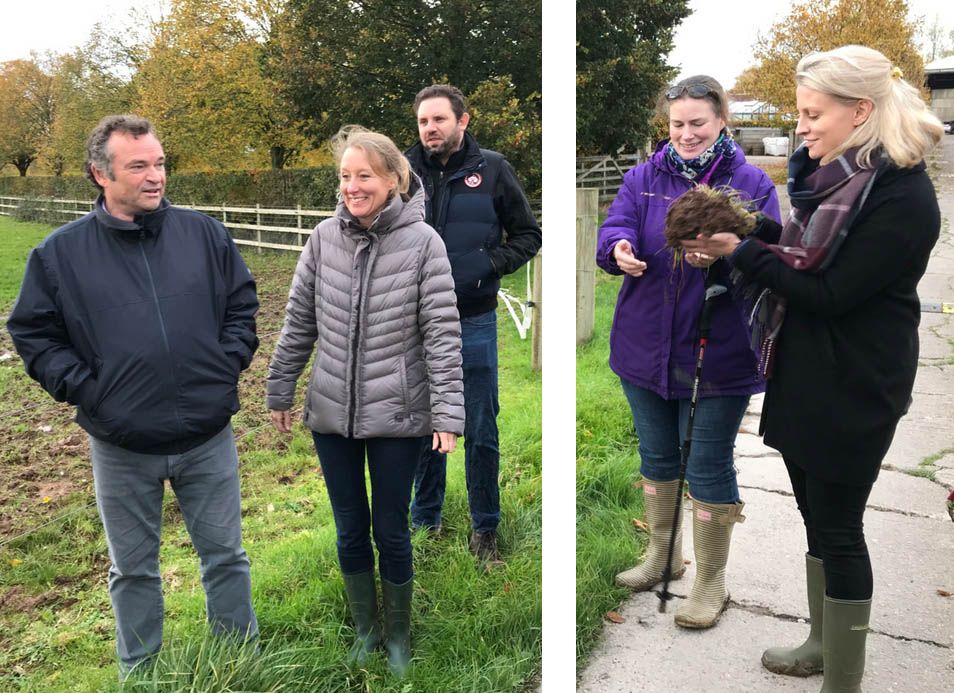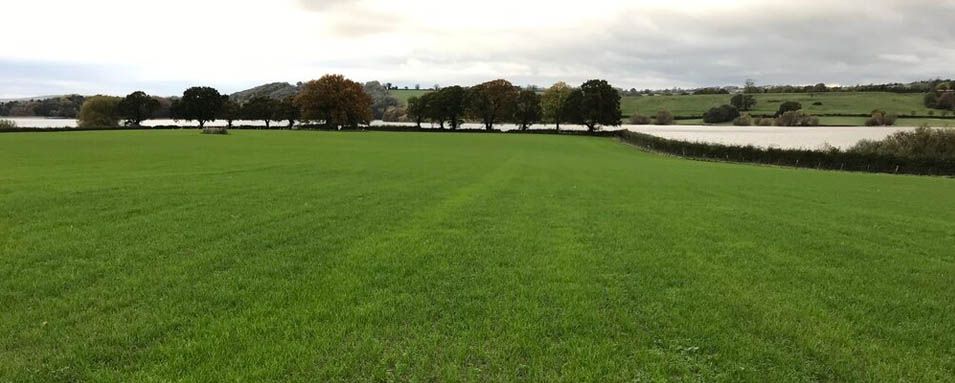Measuring Soils in the Landscape

The SSA joined forces with the Environment Agency to host a practical workshop on measuring soils in the landscape at Yeo Valley, attended by members of the farm team and government representatives. The workshop addressed how metrics for measuring soil health can be effectively applied on-farm, exploring whether there is a need for standardised guidance in the context of differing soilscapes across the country.

Session 1: A brief history of soil assessment.
Presented by Richard Smith from the Environment Agency - a practitioner with over 30 years of experience of dealing with soil health problems. In summary:
The Strutt Report (1970) raised serious concerns about the UK’s soil health, specifically loss of organic matter, compaction, inadequate drainage and the impact of large agricultural machinery. This prompted implementation of free advisory services, increased capacity of trained soil health advisors and grant aid for drainage, and the formation of the National Soil Survey of England & Wales - subsequently disbanded by government in the 1980s.
Soils are in crisis, characterised by poor structure and biological health. There is an endemic lack of awareness of how to diagnose soils throughout the soil profile, and access to standard soils information for context and to inform management in all land uses. Management needs to be tailored to the soil problem rather than a ‘one size fits all’ approach.


Session 2: In the field .
Illustrating soil assessment techniques whilst considering the condition and capability of differing soil types in the context of landscape and land use. Yeo Valley’s Holt Farm proved a useful case study as it comprises various landscapes within a one-mile radius from low-lying lakeside to top-of-Mendip hills.


Our key learnings and take-home messages:
Session 2: In the field .
1. Guidance for understanding of the soilscape and its capabilities is pivotal to informing soil management in all land uses (farming, forestry, semi-natural habitats, urban areas)
- Application of metrics according to soil type is critical to measuring soil health
- Use of national soil survey information helps understanding of context
- Land managers need to be able to assess soil health and inform management not only to remediate problems but also to measure environmental outcomes. For this to be meaningful, they need to know exactly what to look for within their own soil landscape. Understanding soil type is pivotal to this
- The provision of independent non-partisan advice, guidance and access to nuanced data necessary to enable effective sampling and appropriate management on-farm is lacking
2. Land managers need access to advice on:
- What they’re looking at: soil types, how these vary within the landscape and how they are present in the field
- What they’re looking for: what does soil health for their specific soil types look like at different depths, and what do their soils need to reach this benchmark?
- What options exist: what practices are available and appropriate to their soil health context?
- What outcomes have been achieved: how can they visually assess the success of practices?
3. Compaction & poor soil health are likely to be widespread issues across UK landscapes
- Prevalent widespread compaction at depth (beneath the topsoil) is commonly unseen and undiagnosed in the South West, and likely to be occurring elsewhere
- Land managers need to ensure soil health throughout the profile (topsoil and subsoil)
- The subsoil state should be as closely monitored as state and health of the topsoil: subsoil health has significant influence on soil’s overall healthy functioning, both for environmental concerns and productivity. Land managers/advisors must be able to understand naturally dense soils (e.g. clay) as well as manmade compaction
- This complete understanding of the soil profile, at surface and at depth, should inform the subsequent choice of management practice, including drainage requirements, where needed, and crop selection, where relevant
- The compaction issue needs to sit alongside carbon, with the understanding that a soil’s carbon content does not necessarily equate to health – rather, the relevance of carbon to soil health relates to the soil type and land use objectives in question. For example, water will not infiltrate below carbon-rich topsoil if this sits over compacted subsoil: saturation and runoff will follow with associated environmental/production implications
4. Timeliness is key
- The timing of activities sits at the heart of contextuality
- Applying management practices at the wrong time may do more damage to soil than the remedial practice will provide benefit (e.g. planting a remedial cover crop when soil is slightly wet will cause compaction resulting in runoff and poor crop performance)
- Timeliness is a subtle art and not always easy to implement in challenging weather and financial conditions
5. Practices must be tied to solutions
- Practices are context-dependant: effective practices for achieving soil health differ across soil types, regional climates and landscapes; these will vary across each farm or even sometimes across individual fields o Context includes soil type, landscape, land use objective, climate, seasons and timeliness o It is critical to ensure soil health sits at the heart of the practice used, rather than focusing on one-size-fits-all practices. Practice choice should be driven towards an envisaged end result – the environmental and production outcomes. Different soils, conditions and objectives call for different practices to achieve this
6. The following questions around centralised soil education and farm advisors remain:
- Who is currently providing advice and guidance?
- Is there standardised guidance across all land uses and soil types dealing with the key metrics (covering compaction, hydrology, carbon, lime content & soil biota)?
- How are advisors trained to a common standard for comprehensive soil assessment?
- How do land managers currently learn about soils and how to improve their soil health?
- What has replaced the formerly Government-centralised, standardised guidance and advisor system dealing with soil assessment (Soil Survey of England & Wales / ADAS)?

Observations and discussions from the workshop lead the SSA to conclude that:
The knowledge of what to look for and how to interpret this in order to inform the various appropriate options for remediation is critically important to the success of achieving on-farm soil health.
The SSA suggests, therefore, that the development of a technical National Guidance for Soils is the next logical step in achieving nationwide on-farm soil health. This sits squarely within the context of current development of agricultural policy and the new ELM scheme and would support the efficacy of these instruments.
The following questions around centralised soil education and farm advisors remain:
- Standardised and endorsed by Government bodies, NGOs and business institutions
- Landscape-based, taking into account differences across regions, landscapes, soilscapes and regional climates
- Nuanced, considering differences across fields, habitats and landscapes
- Covers all land uses
- Incorporates basic on-site metrics such as those recommended by the National Trust/Soil Security Programme
- Comprises free access to a simplified version of National Soil Survey data
- Provides land managers with increased understanding of what ‘success’ (soil health) looks (and/or should look) like based on improved understanding of specific soil types
- Provides land managers with guidance on management-appropriate techniques or practices to support improved soil health based on this enhanced understanding
- Provides the tools to benchmark improvement and assess success of remediation
- Provides a mechanism for land managers to be rewarded for environmental outcomes delivered through the health of their soil
